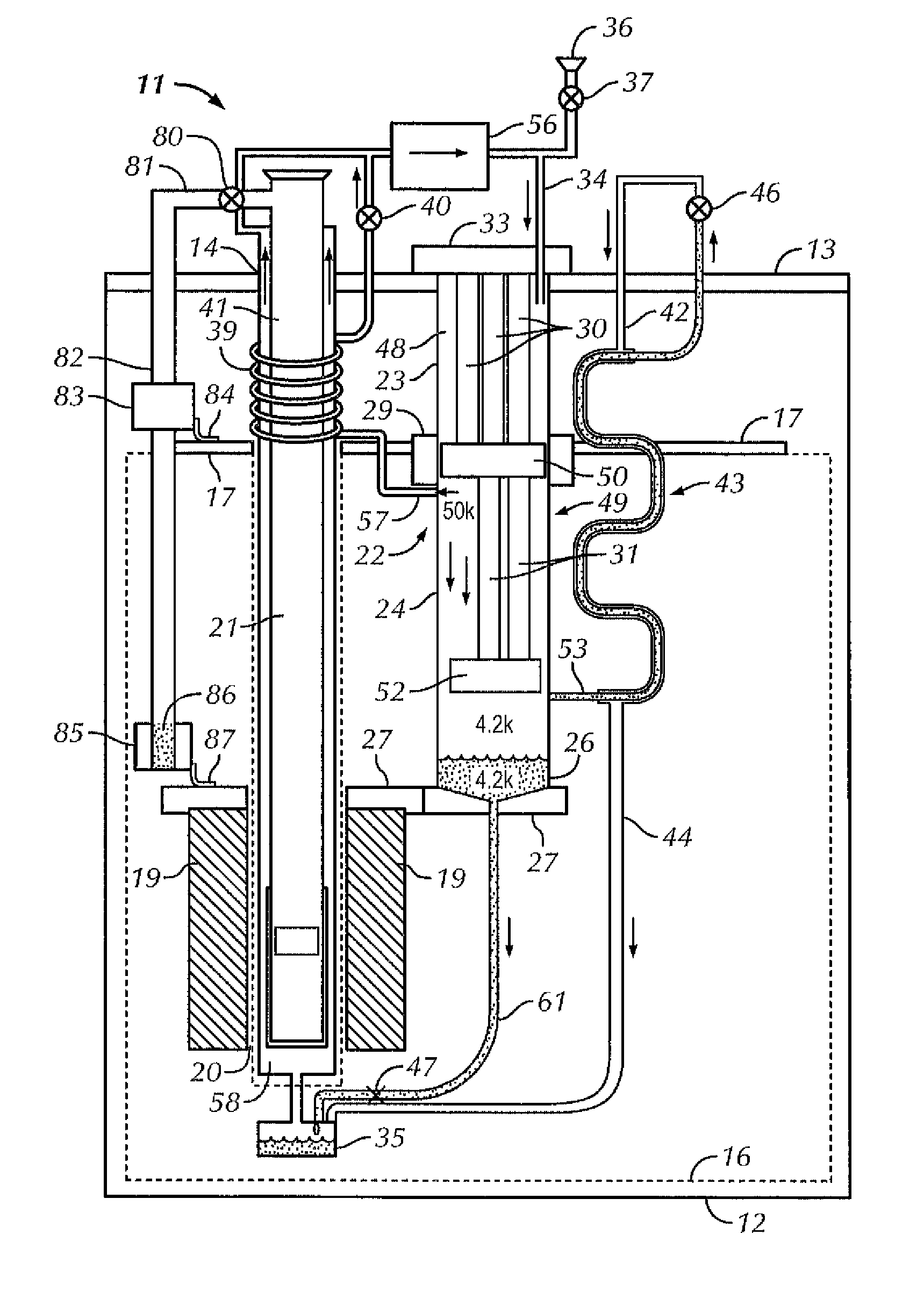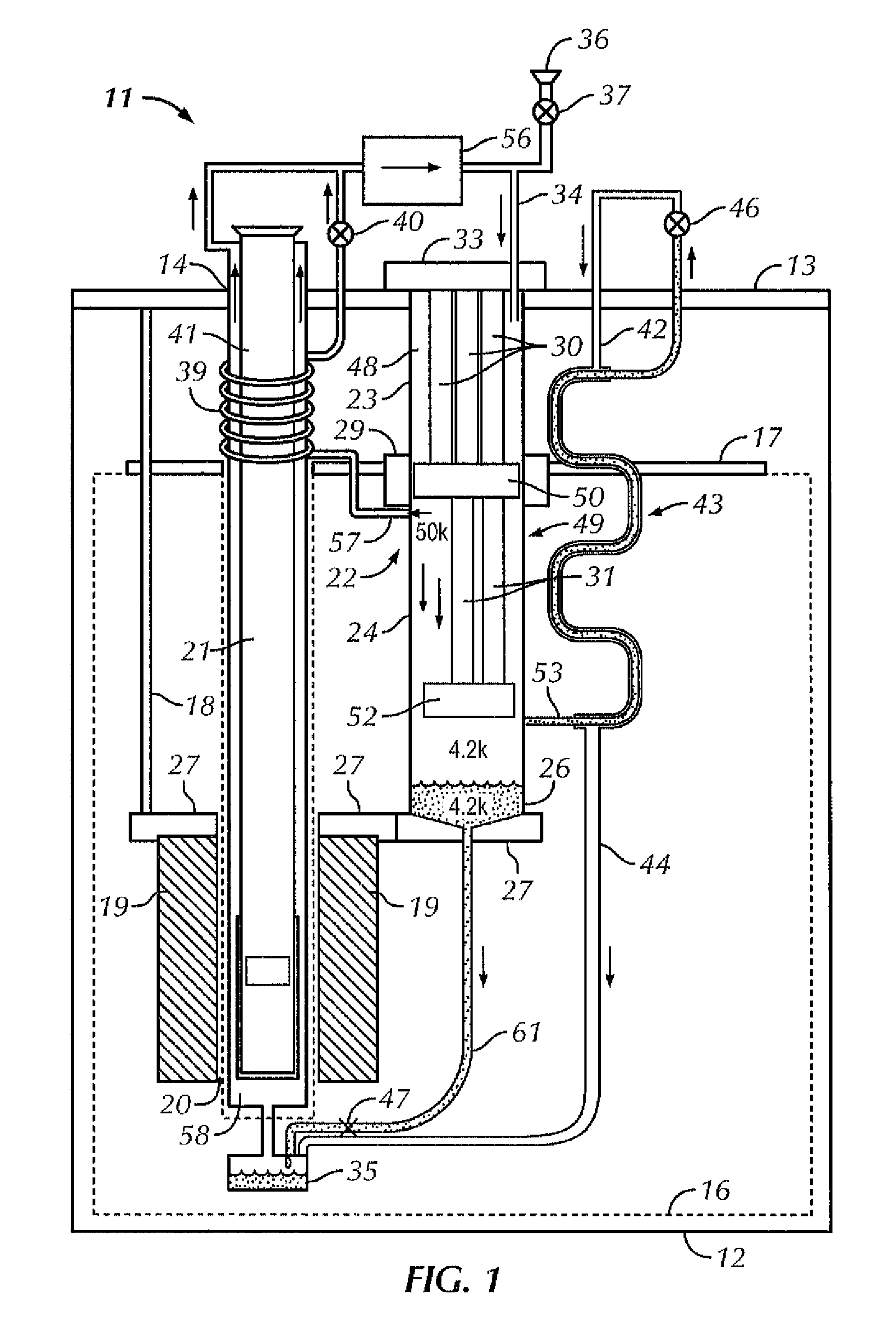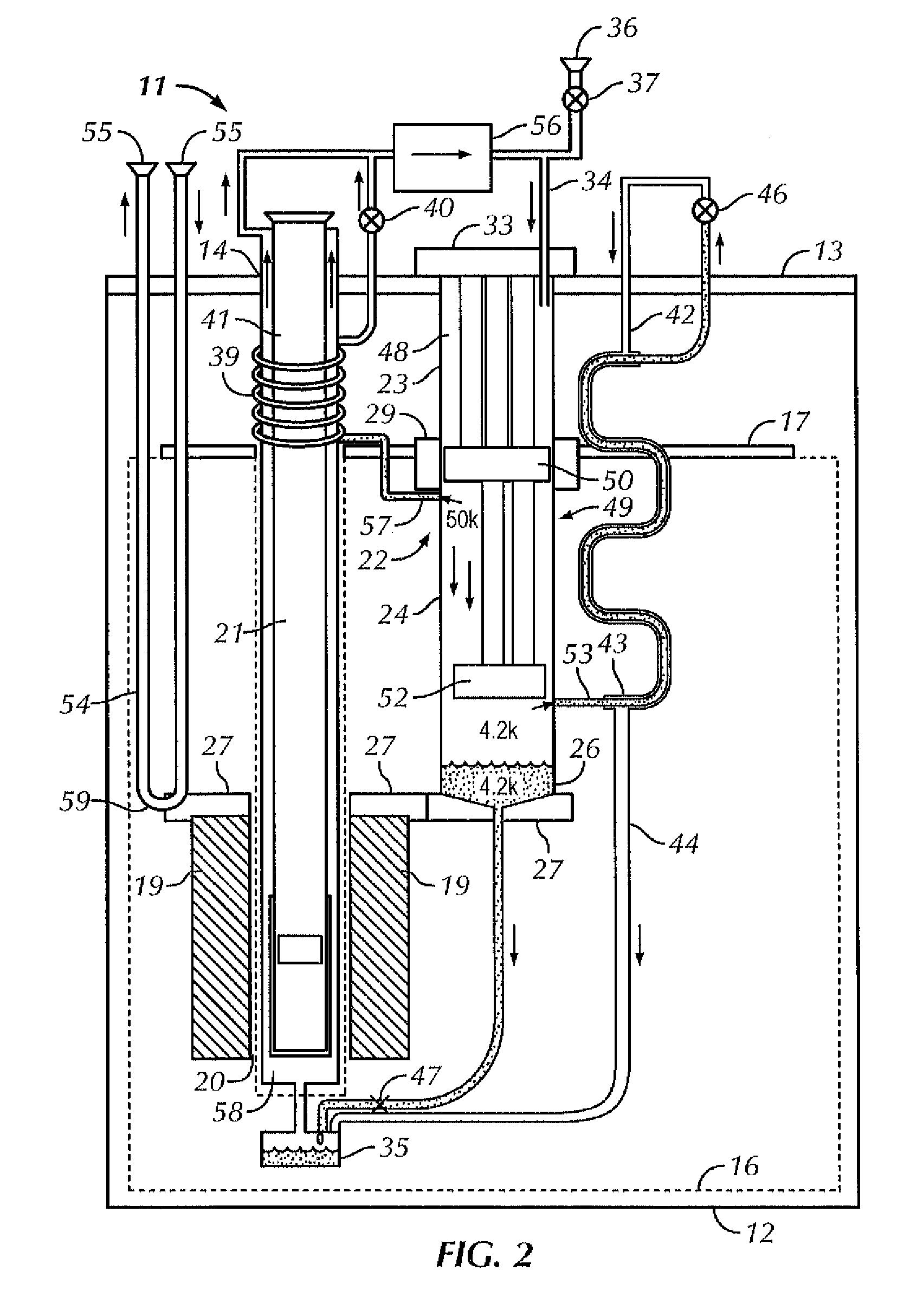Method and apparatus for controlling temperature in a cryocooled cryostat using static and moving gas
a technology of static and moving gas and cryostat, which is applied in the direction of domestic cooling apparatus, container discharge methods, separation processes, etc., can solve the problems of limiting modularity and use of measurement systems, affecting the efficiency of measurement systems, and affecting the overall system complexity and cost, so as to operation, reduce the cost of helium replenishment, and reduce the cost of maintenan
- Summary
- Abstract
- Description
- Claims
- Application Information
AI Technical Summary
Benefits of technology
Problems solved by technology
Method used
Image
Examples
Embodiment Construction
[0013]In a system for temperature regulation which embodies the principles of the invention, a varying magnetic field is generated by a superconducting magnet. In one embodiment, the temperature in a sample chamber is controlled under a variety of temperature ranges by selectively transferring the cooling power from the cryogenic cooler assembly to the different areas within the system apparatus. The magnet assembly is maintained at an approximately constant temperature of 4.2 K, at least in part, by solid conduction contact with a thermally conductive element which is cooled by gaseous or liquid helium that is condensed by the cryogenic cooler.
[0014]Such arrangement allows simultaneous temperature sweeping and control of the sample specimen (between 400 K and down to below 2 K) and also cooling of a high-field superconducting magnet using a single multistage, helium-temperature cryogenic cooler that does not rely on the prior art physical links, cryogenic moving parts, and mechanic...
PUM
| Property | Measurement | Unit |
|---|---|---|
| temperatures | aaaaa | aaaaa |
| temperatures | aaaaa | aaaaa |
| temperature | aaaaa | aaaaa |
Abstract
Description
Claims
Application Information
 Login to View More
Login to View More - R&D
- Intellectual Property
- Life Sciences
- Materials
- Tech Scout
- Unparalleled Data Quality
- Higher Quality Content
- 60% Fewer Hallucinations
Browse by: Latest US Patents, China's latest patents, Technical Efficacy Thesaurus, Application Domain, Technology Topic, Popular Technical Reports.
© 2025 PatSnap. All rights reserved.Legal|Privacy policy|Modern Slavery Act Transparency Statement|Sitemap|About US| Contact US: help@patsnap.com



